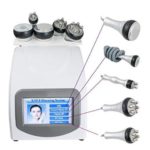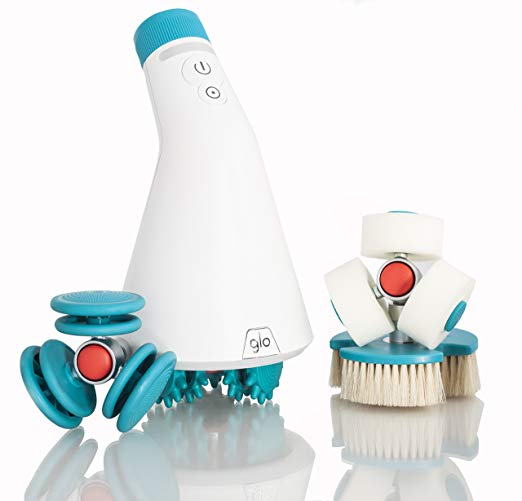Last Updated on 4 months by Francis
Infrared heaters have gained popularity as a cost-effective and efficient way to heat homes. However, concerns about their safety and potential fire hazard risks have raised questions among homeowners. In this article, we will explore the safety aspects of infrared heaters and provide essential tips to mitigate any potential risks.
Contents
Key Takeaways:
- Understanding the potential fire hazards that infrared heaters can pose.
- Exploring the factors that contribute to fire risks.
- Choosing high-quality infrared heaters from reputable manufacturers.
- Implementing safety precautions to minimize the risks.
- Exploring the efficiency and performance of Heat Storm heaters.
How Do Infrared Heaters Work?
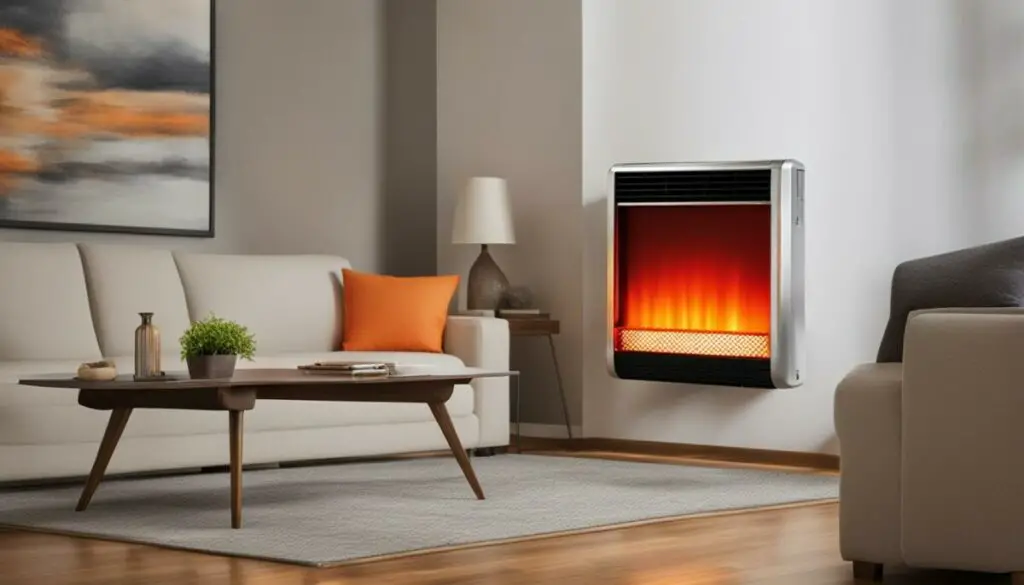
Infrared heaters operate by utilizing the principles of electromagnetic radiation to produce heat. Unlike traditional heaters that rely on convection to warm the air, infrared heaters emit infrared radiation which directly heats objects in the room.
The heating element within an infrared heater produces infrared waves that travel through the air and are absorbed by objects in their path. These objects, such as furniture, walls, and even people, then release the absorbed heat back into the room, creating a comfortable and even warmth.
One of the advantages of infrared heating is its cost-effectiveness. By heating objects and surfaces directly, infrared heaters minimize heat loss and reduce energy consumption compared to conventional heaters. Additionally, infrared heaters provide instant heat, eliminating the need for waiting periods or preheating.
However, it is crucial to be aware of the potential risks associated with infrared heating. Overheating is a significant concern, as it can lead to fire hazards if not properly regulated and maintained. Regular maintenance, inspection, and adherence to safety guidelines are essential to minimize the risks associated with infrared heaters.
To illustrate how infrared heaters work, consider the following example:
Let’s say you have an infrared heater placed in a room. As the heater operates, it emits infrared waves that travel through the air and reach the objects in the room. These objects absorb the heat and gradually release it, ensuring a consistent and comfortable temperature. This process creates a cozy environment without the need to continuously heat the air and thus helps save energy and costs.
To visualize the concept further, referring to the image below:
Fire Safety Concerns with Infrared Heaters
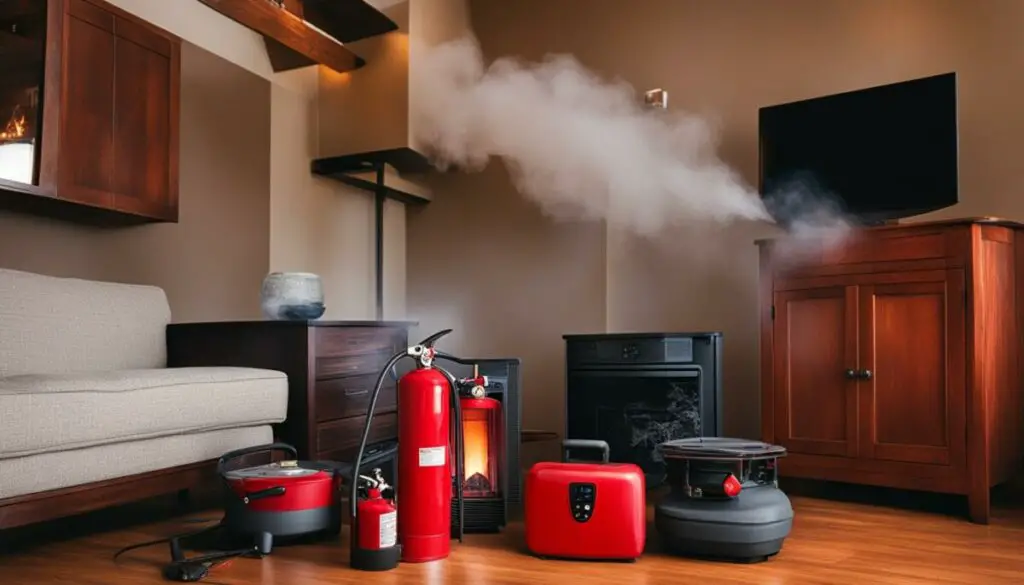
While infrared heaters are engineered with safety features like automatic shut-off mechanisms, they are not entirely impervious to overheating. Excessive usage or inadequate maintenance can cause the heaters to reach dangerous temperatures and increase the risk of fire. It’s important to keep flammable materials at a safe distance from the heaters and regularly inspect and clean the devices to prevent electrical malfunctions that can lead to sparks and fires.
To ensure fire safety when using infrared heaters, follow these essential tips:
- Keep a minimum distance of three feet between the heater and any flammable materials, such as curtains, furniture, or clothing. This will help prevent accidental fires caused by direct contact.
- Regularly inspect the heater for any signs of damage, wear, or malfunction. Be vigilant about loose or frayed wires and promptly address any issues to prevent electrical malfunctions.
- Clean the heater regularly to remove dust, debris, or other obstructions that can hinder proper ventilation and cause the device to overheat. Follow the manufacturer’s instructions for cleaning and maintenance.
- Avoid using extension cords or power strips to connect the heater. Plug the heater directly into a wall outlet to minimize the risk of electrical overload or short circuits.
- Never leave the heater unattended. Always turn off the heater when leaving the room or going to bed.
- Ensure that the heater is placed on a stable, flat surface and is not at risk of tipping over. This will help prevent accidental fires caused by the heater falling onto flammable materials.
Infrared heaters offer efficient and effective heating solutions, but it’s crucial to prioritize fire safety to minimize potential hazards. Following these safety tips and practicing regular maintenance will ensure that you can enjoy the warmth and comfort of an infrared heater without compromising your home’s safety.
Factors Affecting Fire Risks
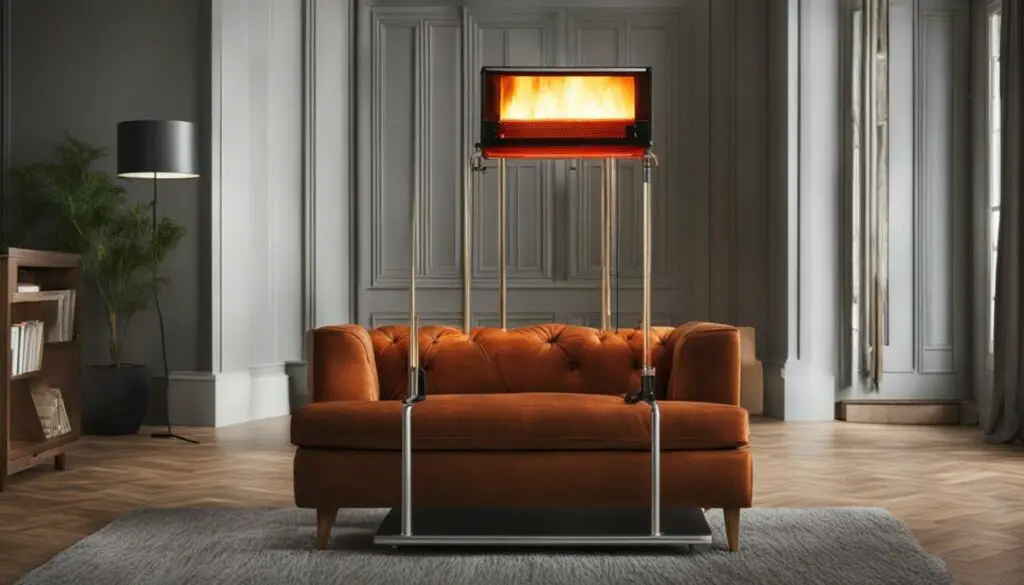
When it comes to infrared heaters, fire risks can be influenced by several factors. Understanding these factors and taking appropriate precautions is essential to ensure the safe use of these heating devices. Let’s explore some key considerations that can help mitigate fire hazards associated with infrared heaters.
Heater Quality and Manufacturing Standards
The quality and manufacturing standards of infrared heaters play a crucial role in their safety. Investing in heaters from reputable manufacturers that adhere to industry standards is important to reduce the potential for fire incidents. These manufacturers prioritize safety in their design and production processes, ensuring that their heaters are built with reliable components that can withstand regular use without posing a fire risk.
Maintenance and Cleaning
Regular maintenance and cleaning are vital to prevent potential fire risks with infrared heaters. Dust and debris accumulation on the heating elements can lead to overheating and a higher risk of fire. It is recommended to follow the manufacturer’s guidelines on maintenance and cleaning, which may include regular inspections, removing dust and debris, and ensuring proper electrical connections.
Proper Placement and Ventilation
Proper placement and ventilation of infrared heaters are crucial to minimize the risk of fires. It’s important to keep the heaters away from flammable materials, such as curtains, furniture, or paper, which can ignite if exposed to high temperatures. Additionally, ensuring adequate airflow around the heater can help dissipate heat and reduce the chances of overheating. Proper ventilation also prevents the accumulation of carbon monoxide, a byproduct of combustion, which can be harmful if trapped in enclosed spaces.
By considering these factors and implementing safety measures, you can enjoy the benefits of infrared heaters while minimizing the risk of fire incidents. Remember to invest in high-quality heaters, perform regular maintenance and cleaning, and place the heaters in well-ventilated areas away from flammable materials.
Summary:
- Invest in heaters from reputable manufacturers that adhere to industry standards.
- Follow the manufacturer’s guidelines for maintenance and cleaning.
- Keep the heaters away from flammable materials and ensure proper ventilation.
Best Infrared Heater: Safeguarding Your Space from Infrared Heater Hazards
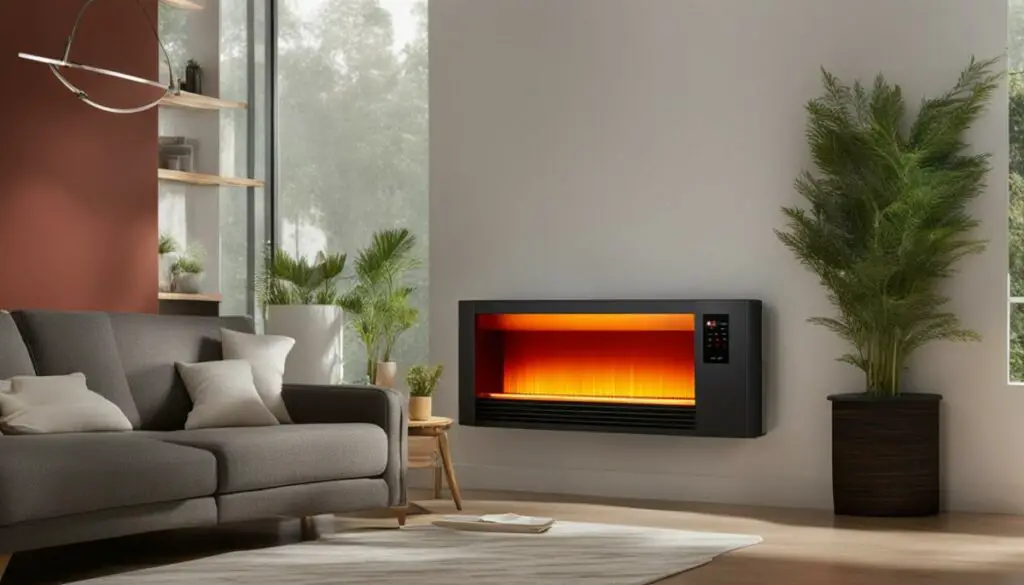
When it comes to infrared heaters, choosing the right one is crucial to ensure the safety of your space. Opting for the best infrared heater from reputable manufacturers can significantly reduce the potential fire hazards associated with these devices. Here are some tips to consider when selecting an infrared heater:
- Look for safety features: Prioritize infrared heaters that come equipped with safety features such as automatic shut-offs and temperature controls. These features help regulate the heat output and prevent overheating, minimizing the risk of fire hazards.
- Maintain a safe distance: It’s important to maintain a safe distance between the infrared heater and other objects, including furniture, curtains, and flammable materials. Keeping a clearance of at least three feet around the heater ensures proper airflow and reduces the risk of accidental ignition.
- Ensure proper ventilation: Good ventilation is essential when using an infrared heater. Adequate airflow prevents the buildup of carbon monoxide and other potentially harmful gases. Make sure the heater is placed in a well-ventilated area, away from obstructed air vents or corners.
- Regular maintenance and cleaning: Regularly inspect and clean your infrared heater to prevent dust and debris accumulation. Over time, these particles can coat the heating element, interfering with its efficiency and potentially causing overheating and fire hazards.
Remember: Infrared heaters can provide efficient and targeted heating, but it’s important to take the necessary precautions to ensure their safe use. By selecting the best infrared heater for your space and implementing these safety tips, you can enjoy the warmth and comfort without compromising on safety.
When it comes to protecting your space from infrared heater hazards, proactive measures go a long way. Keep in mind that safety should always be a priority. By investing in a top-rated infrared heater and following the necessary precautions, you can enjoy the benefits of efficient heating while keeping your home safe.
The Science Behind Infrared Heaters

Infrared heaters offer superior performance compared to traditional heaters, thanks to their unique heat transfer mechanisms. Let’s explore the fascinating science behind these heating devices.
Heat Transfer Mechanisms
Unlike convection heating, where air is heated and then circulated throughout a space, infrared heaters directly emit radiant heat. This heat is transferred through a process called electromagnetic radiation, where electromagnetic waves carry energy from the heater to nearby objects and surfaces. Once absorbed, the heat is then released into the surrounding environment.
This method of heat transfer offers several advantages. First, it eliminates the need for air circulation, reducing dust and allergens in the atmosphere. Second, since infrared heaters primarily heat objects and surfaces rather than the air, the heat stays longer in the room even after the heater is turned off.
Heating Elements and Efficient Heat Generation
The heating elements in infrared heaters play a crucial role in their performance. These elements are typically made of materials like tungsten or carbon fiber, known for their high melting points and durability. This allows the heating elements to withstand extreme temperatures without degrading, resulting in efficient heat generation.
When electricity passes through these heating elements, they become hot and emit infrared radiation. This radiation carries the heat energy and transfers it to the surrounding objects, providing instant warmth.
Heat Exchangers and Enhanced Efficiency
Infrared heaters often incorporate heat exchangers to increase their heating efficiency. Heat exchangers are designed to improve the exchange of heated air and water molecules, maximizing the heater’s effectiveness in heating spaces.
The heat exchanger works by transferring the heat generated by the heating elements to the air or water passing through it. This transfer occurs through conduction, where the hot surface of the exchanger comes into contact with the air or water, allowing the heat to be transferred.
| Advantages of Heat Exchangers in Infrared Heaters |
|---|
| – Enhanced heat transfer efficiency |
| – Improved overall heating performance |
| – Faster and more efficient heat distribution |
| – Reduced energy consumption |
By employing heat transfer mechanisms, high-quality heating elements, and heat exchangers, infrared heaters provide efficient and effective heating solutions for residential and commercial applications.
Health Risks and Safety Precautions
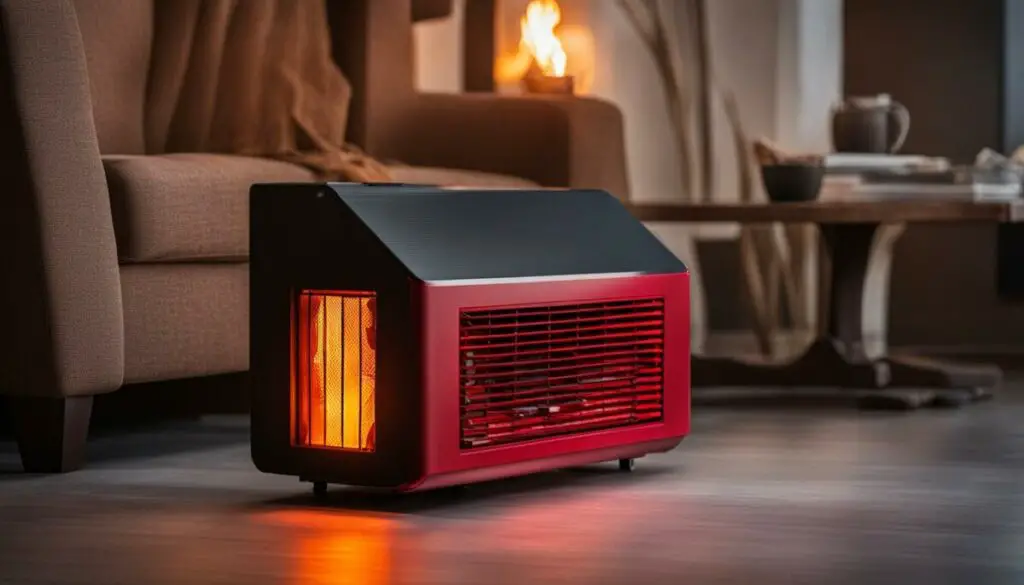
Infrared heaters themselves do not pose significant health risks if used appropriately and with the necessary safety precautions. However, it’s important to be aware of potential hazards and take necessary steps to ensure your safety when using these heaters.
Eye Protection
One of the key safety precautions when using infrared heaters is to protect your eyes from potential damage. Directly staring at an infrared heater for extended periods can lead to eye discomfort and even long-term damage. It is crucial to avoid looking directly at the heat source and maintain a safe distance to protect your eyes from the intense heat.
Burn Prevention
The intense heat produced by infrared heaters can cause burns if you come into direct contact with the heating elements or hot surfaces. To prevent burns, it is essential to maintain a safe distance from the heater and avoid touching it while in operation. Additionally, keep flammable materials and objects away from the heater to minimize the risk of accidental contact and potential fire hazards.
Electrical Safety
When using any electrical device, including infrared heaters, it is crucial to follow electrical safety guidelines. Make sure to plug the heater directly into a grounded outlet and avoid using extension cords or power strips, as they can overheat and pose fire hazards. Regularly inspect the power cord and plug for any signs of damage, and if any issues are detected, immediately discontinue using the heater until it has been repaired or replaced by a qualified professional.
Proper Ventilation
Ensuring proper ventilation when operating an infrared heater is essential for maintaining a safe environment. Adequate airflow helps dissipate heat and prevents overheating. Avoid placing objects or furniture directly in front of or obstructing the heater, as this can impede the flow of air and lead to increased temperatures. Additionally, keep the area around the heater clear of any flammable materials or debris that could ignite and cause a fire.
Safety Precautions Summary
To recap, here are the key safety precautions to keep in mind when using infrared heaters:
- Avoid direct eye contact with the heat source to prevent eye damage.
- Maintain a safe distance from the heater to avoid burns.
- Keep flammable materials away from the heater to minimize fire hazards.
- Plug the heater directly into a grounded outlet and avoid using extension cords.
- Regularly inspect the power cord and plug for any signs of damage.
- Ensure proper ventilation by keeping the area around the heater clear.
By following these safety precautions, you can enjoy the warmth and comfort provided by infrared heaters while minimizing the potential health risks.
| Health Risks | Safety Precautions |
|---|---|
| Eye damage or discomfort from direct exposure to infrared heat | Avoid direct eye contact and maintain a safe distance from the heater |
| Potential burns from contact with heating elements or hot surfaces | Maintain a safe distance from the heater and keep flammable materials away |
| Electrical hazards from faulty cords or improper use | Plug the heater directly into a grounded outlet and regularly inspect the power cord |
| Fire hazards from inadequate ventilation or obstruction | Ensure proper ventilation and keep the area around the heater clear |
Why Heat Storm Heaters are More Efficient Than Others
When it comes to infrared heaters, Heat Storm heaters stand out for their exceptional efficiency and performance. These heaters utilize high-quality heating elements like tungsten or carbon fiber, enabling them to generate heat efficiently and effectively. The incorporation of heat exchangers further enhances their efficiency by optimizing the exchange of heated air and water molecules.
Infrared Heater Efficiency:
“Heat Storm heaters are designed to maximize energy conversion, ensuring that the majority of the electricity they consume is transformed into heat. This high level of efficiency translates into substantial cost savings and more effective heating.”
The unique heating elements in Heat Storm heaters allow for efficient and rapid heat generation. These elements can withstand extreme temperatures and ensure consistent and even heating throughout the space, providing a comfortable and cozy environment. This efficiency makes them a superior choice compared to other infrared heaters.
The Advantage of Heat Exchangers:
“Heat exchangers play a vital role in Heat Storm heaters’ performance by optimizing the transfer of heat to the surrounding air and water molecules. This translates into faster and more efficient heating, ensuring that no energy is wasted.”
By utilizing advanced technology, Heat Storm heaters achieve a higher level of energy efficiency, making them an excellent option for cost-effective and environmentally friendly heating solutions. Additionally, their efficient operation reduces the risk of overheating and mitigates potential fire hazards.
Experience the difference of Heat Storm heaters and enjoy reliable, efficient, and safe heating in your home or office. Discover the benefits of infrared heating with Heat Storm today!
| Features | Heat Storm Heaters | Other Infrared Heaters |
|---|---|---|
| Heating Element | Tungsten/Carbon Fiber | Variety of materials |
| Heat Exchangers | Optimized design | Not all models have heat exchangers |
| Efficiency | High energy conversion | Variable energy conversion |
| Heating Speed | Fast and consistent | Variable heating speed |
| Safety Features | Automatic shut-off mechanisms | Varies by model |
Conclusion
When it comes to using infrared heaters, safety should be a top priority. These heaters may offer efficient heating solutions, but if not used and maintained properly, they can potentially become fire hazards. However, by following essential safety precautions, you can minimize the associated risks and enjoy the benefits of infrared heating in your home.
One crucial safety measure is to keep flammable materials at a safe distance from the heaters. This simple precaution can significantly reduce the chances of fire incidents. Additionally, regular maintenance and cleaning are vital to prevent overheating caused by dust and debris accumulation, which can lead to potential fire hazards.
Proper placement and ventilation of infrared heaters are also essential for safety. Ensuring adequate airflow around the heater can help dissipate excess heat and keep the device functioning optimally. It’s also vital to choose high-quality infrared heaters from reputable manufacturers. One such brand to consider is Heat Storm, known for its efficient performance and safety features.
By adhering to safety guidelines and taking proactive measures, you can create a safe environment while enjoying the energy-efficient heating provided by infrared heaters. Remember to always prioritize safety and follow the necessary precautions to minimize fire hazard risks and maximize the benefits of infrared heater efficiency in your home.
FAQ
Are infrared heaters safe to use?
Yes, infrared heaters are safe to use if proper safety precautions are followed. It is important to keep flammable materials at a safe distance, regularly maintain and clean the heaters, and ensure proper placement and ventilation.
Do infrared heaters pose a fire hazard?
While infrared heaters can potentially pose a fire hazard if not used and maintained properly, the risks can be minimized by adhering to safety guidelines. Choosing high-quality heaters, practicing regular maintenance, and following safety precautions can greatly reduce the potential fire hazards.
How do infrared heaters work?
Infrared heaters work by emitting heat through electromagnetic radiation. This type of heating is more cost-effective than traditional methods as the heat is absorbed by objects in the room, resulting in efficient heat transfer.
What are the fire safety concerns with infrared heaters?
Fire safety concerns with infrared heaters include overheating, which can lead to fire hazards if not regulated and maintained properly. It is important to ensure regular maintenance, keep flammable materials away, and inspect the devices to prevent electrical malfunctions that can cause sparks and fires.
What factors affect the fire risks associated with infrared heaters?
Several factors can contribute to the fire risks of infrared heaters. The quality and manufacturing standards of the heaters play a significant role in their safety. Regular maintenance and cleaning are also crucial to prevent overheating caused by dust and debris accumulation. Proper heater placement and ventilation further minimize the risk of fires.
What are some infrared heater safety tips?
To ensure the safety of using infrared heaters, it is important to maintain a safe distance from flammable materials, regularly inspect and clean the heaters, and ensure proper ventilation. Following these safety tips can help mitigate potential fire hazards.
What is the science behind infrared heaters?
Infrared heaters work by transferring heat through electromagnetic radiation. The heating elements in these heaters, made of materials like tungsten or carbon fiber, can withstand extreme temperatures, allowing for efficient heat generation. The use of heat exchangers enhances the exchange of heated air and water molecules, maximizing the heaters’ efficiency in heating spaces.
Do infrared heaters pose health risks?
Infrared heaters themselves do not pose significant health risks if used appropriately and with the necessary safety precautions. However, prolonged exposure to the intense heat can cause burns and eye damage. It is important to follow safety guidelines and ensure proper electrical safety.
Why are Heat Storm heaters more efficient than others?
Heat Storm heaters are known for their efficiency and performance compared to other infrared heaters. They use high-quality heating elements like tungsten or carbon fiber for efficient heat generation. Additionally, the incorporation of heat exchangers enhances the exchange of heated air and water molecules, increasing their efficiency in heating spaces.
What is the conclusion regarding infrared heaters?
Infrared heaters can potentially pose fire hazards if not used and maintained properly. However, by adhering to safety guidelines, choosing high-quality heaters, and following safety precautions, the risks can be minimized. It is also important to consider efficiency factors and invest in reputable brands like Heat Storm heaters. Overall, with the right safety measures in place, infrared heaters can be a safe and efficient heating option for your space.

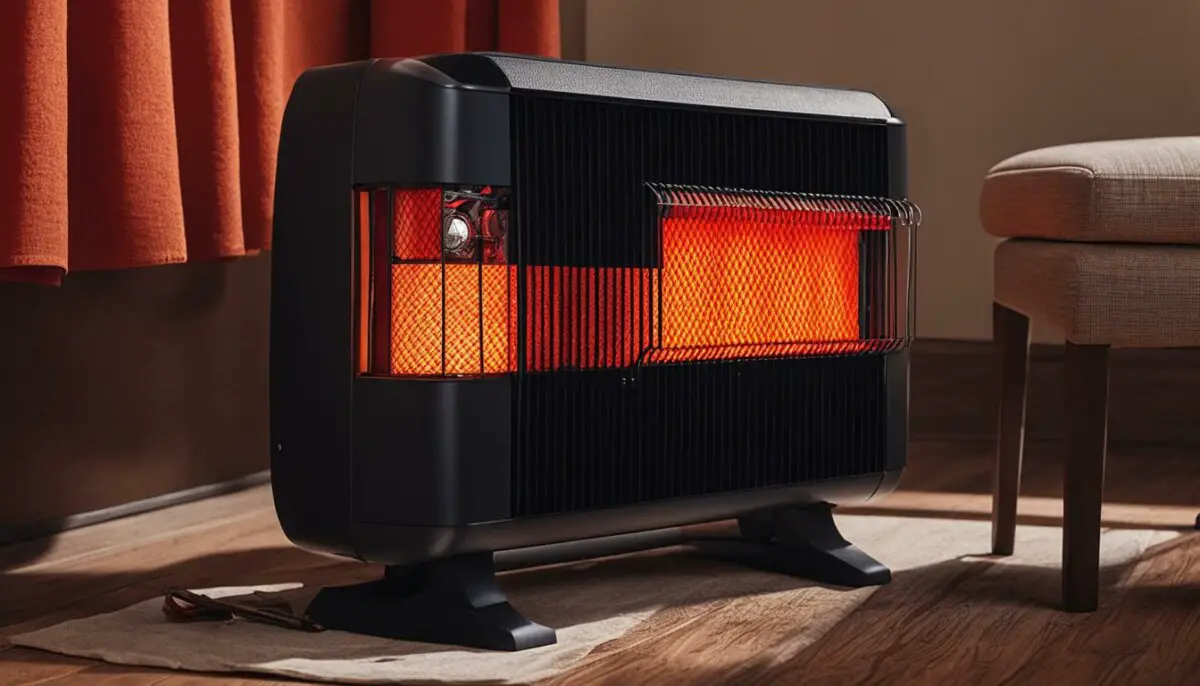
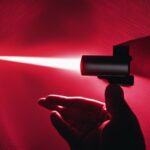


.jpg)
